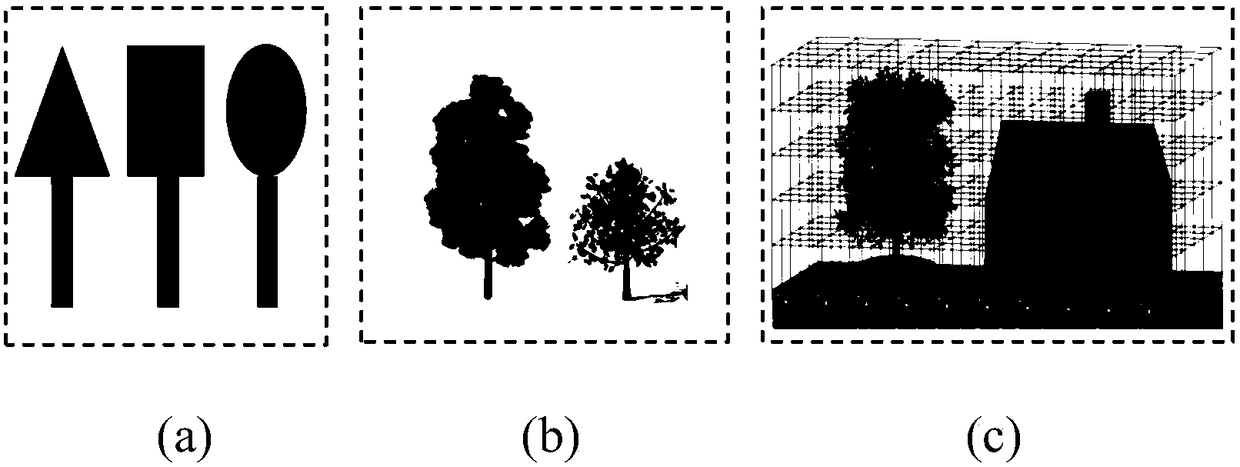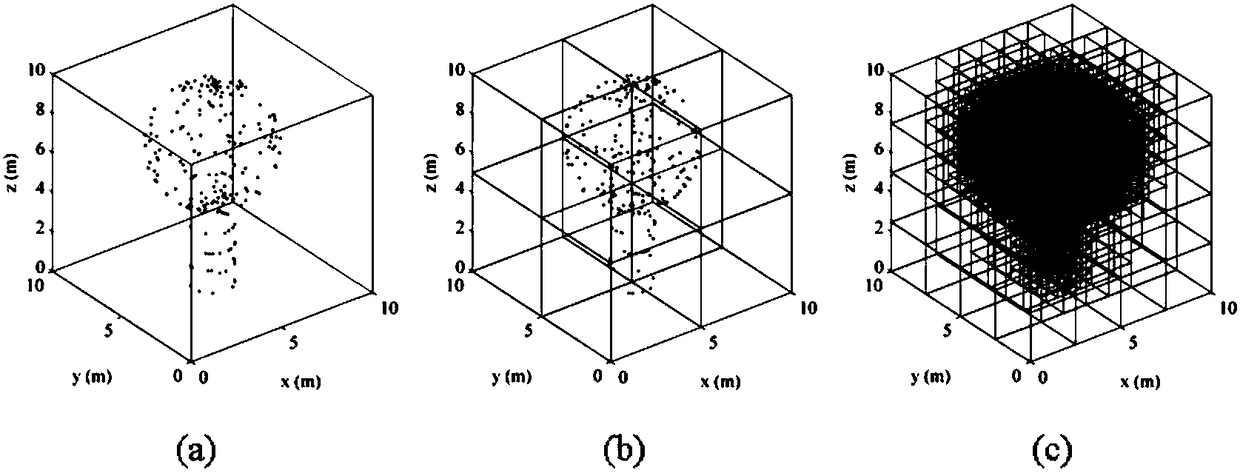Plant canopy three-dimensional radiation transmission analog method based on Lidar data
A technology of radiation transfer and vegetation canopy, applied in the field of remote sensing, can solve the problems of complex parameterization process and limitations of the model, and achieve the effect of improving memory utilization efficiency, simple algorithm, and good practicability
- Summary
- Abstract
- Description
- Claims
- Application Information
AI Technical Summary
Problems solved by technology
Method used
Image
Examples
Embodiment 1
[0036] like Figure 5 As shown, the method provided by the invention specifically includes the following steps:
[0037] (1) Scene construction
[0038] The input data of the method is preprocessed high-precision, high-density Lidar data. Lidar data preprocessing steps include: filtering process, which divides Lidar data into ground points and non-ground points; spatial interpolation is performed on ground points to generate a surface elevation model (digital elevation model, DEM), which is used to describe the terrain; for non-ground points, The Lidar data of each tree is extracted separately using the single-tree segmentation algorithm; on the basis of the single-tree segmentation, the branch-leaf separation algorithm is used to further divide the Lidar data of each tree into leaves and branches. There are already mature algorithms and software tools for Lidar data preprocessing, which will not be described in detail here. After the Lidar data is preprocessed by classific...
PUM
 Login to View More
Login to View More Abstract
Description
Claims
Application Information
 Login to View More
Login to View More - R&D
- Intellectual Property
- Life Sciences
- Materials
- Tech Scout
- Unparalleled Data Quality
- Higher Quality Content
- 60% Fewer Hallucinations
Browse by: Latest US Patents, China's latest patents, Technical Efficacy Thesaurus, Application Domain, Technology Topic, Popular Technical Reports.
© 2025 PatSnap. All rights reserved.Legal|Privacy policy|Modern Slavery Act Transparency Statement|Sitemap|About US| Contact US: help@patsnap.com



